Medieval Long Sword with Fish-Dragons and Tridents Mid 10th-late 12th century AD An Oakeshott Type Xa or Petersen type X long sword, the blade is elegant, finely tapering and fitted with well-formed fullers running down to within few centimetres of the point, the cutting edges are also in good condition and bear evidence of battlefield use; on both sides the fullers are decorated with laten inlays: on one side two fish-dragons facing each other, on the other opposed tridents formed by three arrow points; both sides of the blade also reveal traces of an inscription: on the side of the marine monsters, set within the fuller (at a distance of about 10 cm from the cross-guard) begins after a stylised monogram (the remains of a damascened cross of Jerusalem?), but now only the letter R is clearly visible; on the other side the letters are scarcely visible, only the monogram; the well preserved cross-guard is long about 20cm and in good condition, gently tapering, of the type known by the Vikings as gaddhjalt (spike-hilt), this added hilt would have given the hand of the owner considerably more protection without increasing the weight; the tang is very stout without a minute taper and ends with the usual walnut style pommel. 1.25 kg, 92.5cm (36 1/2"). Fine condition. Provenance Property of a Suffolk collector; formerly acquired on the European art market in the 1990s; accompanied by an academic report by military specialist Dr Raffaele D'Amato Literature See Leppäaho J., Spateisenzeitichle Waffen aus Finnland: Schwertinschriften und Waffenverzierungen des 9-12 Jahrhunderts, Helsinki,1964; Peirce, I., Swords of the Viking Age, Suffolk, 2002; Gilliot, C., Armes & Armures, V-XV, Bayeux, 2008; Janowski A., Kurasiński T., Pudło P., 'A sign, a_symbol or a_letter? Some remarks on omega marks inlaid on early medieval sword blades', in Acta Universitatis Lodziensis Folia Archaeologica, 29/2012, pp.83-110; D'Amato R., Spasić Durić D., 'The Phrygian helmet in Byzantium: archaeology and iconography in the light of the recent finds from Branicevo', in Acta Militaria Mediaevalia, tom XIV, 2018, pp.29-68; this sword finds good parallels with one sword published by Peirce, preserved in the Musée de l'Armée, Paris (Peirce, 2002, p.131) and with a sword published by Leppäaho (1964, p.14 and pl.5), if it is the case, the inscription could be the same INLERURIEITI visible on this latter, which Peirce refers as having some important meaning in Antiquity; not to exclude however other inscriptions, like the one visible on a similar 12th century German sword published by Gilliot (2008, p.121) reporting SPES MEA JESUS PER OMNES... (Jesus my hope amidst all "trials"...). Footnotes Most probably our specimen is coming from a battlefield or from a grave. Many swords of similar type can be classified as of German manufacture, and we know these kinds of pommels were in use until the 13th century. This one handed sword presents the same Brazil nut pommel of the swords visible on the lost miniatures of the Hortus Deliciarum (D'Amato-Spasić Durić, 2018, p.53), a German Manuscript of the second quarter of 12th century. The straight guard with thick straight quillons are typical of the style Xa of Oakeshott, a kind of sword that, with its double-edged blade, combined the cutting and the cut-and-thrust styles. The fullers, like in this case, are very marked and form not less than two thirds of the length. For a medieval warrior, and especially for a western miles (knight) the sword was closely associated with everything was most significant in a man's life-family ties: loyalty, valour in the excitement of the combat and funerary rites. A warrior was never parted from it: he carried in it in the king's hall and on all social occasions. It hung at his back when he was at table and by his bed when he was sleeping. The sword was his shoulder companion and we can well understand the lament of the Viking poet Bersi the dueller, a famous swordsman of 10th century, complaini
Medieval Long Sword with Fish-Dragons and Tridents Mid 10th-late 12th century AD An Oakeshott Type Xa or Petersen type X long sword, the blade is elegant, finely tapering and fitted with well-formed fullers running down to within few centimetres of the point, the cutting edges are also in good condition and bear evidence of battlefield use; on both sides the fullers are decorated with laten inlays: on one side two fish-dragons facing each other, on the other opposed tridents formed by three arrow points; both sides of the blade also reveal traces of an inscription: on the side of the marine monsters, set within the fuller (at a distance of about 10 cm from the cross-guard) begins after a stylised monogram (the remains of a damascened cross of Jerusalem?), but now only the letter R is clearly visible; on the other side the letters are scarcely visible, only the monogram; the well preserved cross-guard is long about 20cm and in good condition, gently tapering, of the type known by the Vikings as gaddhjalt (spike-hilt), this added hilt would have given the hand of the owner considerably more protection without increasing the weight; the tang is very stout without a minute taper and ends with the usual walnut style pommel. 1.25 kg, 92.5cm (36 1/2"). Fine condition. Provenance Property of a Suffolk collector; formerly acquired on the European art market in the 1990s; accompanied by an academic report by military specialist Dr Raffaele D'Amato Literature See Leppäaho J., Spateisenzeitichle Waffen aus Finnland: Schwertinschriften und Waffenverzierungen des 9-12 Jahrhunderts, Helsinki,1964; Peirce, I., Swords of the Viking Age, Suffolk, 2002; Gilliot, C., Armes & Armures, V-XV, Bayeux, 2008; Janowski A., Kurasiński T., Pudło P., 'A sign, a_symbol or a_letter? Some remarks on omega marks inlaid on early medieval sword blades', in Acta Universitatis Lodziensis Folia Archaeologica, 29/2012, pp.83-110; D'Amato R., Spasić Durić D., 'The Phrygian helmet in Byzantium: archaeology and iconography in the light of the recent finds from Branicevo', in Acta Militaria Mediaevalia, tom XIV, 2018, pp.29-68; this sword finds good parallels with one sword published by Peirce, preserved in the Musée de l'Armée, Paris (Peirce, 2002, p.131) and with a sword published by Leppäaho (1964, p.14 and pl.5), if it is the case, the inscription could be the same INLERURIEITI visible on this latter, which Peirce refers as having some important meaning in Antiquity; not to exclude however other inscriptions, like the one visible on a similar 12th century German sword published by Gilliot (2008, p.121) reporting SPES MEA JESUS PER OMNES... (Jesus my hope amidst all "trials"...). Footnotes Most probably our specimen is coming from a battlefield or from a grave. Many swords of similar type can be classified as of German manufacture, and we know these kinds of pommels were in use until the 13th century. This one handed sword presents the same Brazil nut pommel of the swords visible on the lost miniatures of the Hortus Deliciarum (D'Amato-Spasić Durić, 2018, p.53), a German Manuscript of the second quarter of 12th century. The straight guard with thick straight quillons are typical of the style Xa of Oakeshott, a kind of sword that, with its double-edged blade, combined the cutting and the cut-and-thrust styles. The fullers, like in this case, are very marked and form not less than two thirds of the length. For a medieval warrior, and especially for a western miles (knight) the sword was closely associated with everything was most significant in a man's life-family ties: loyalty, valour in the excitement of the combat and funerary rites. A warrior was never parted from it: he carried in it in the king's hall and on all social occasions. It hung at his back when he was at table and by his bed when he was sleeping. The sword was his shoulder companion and we can well understand the lament of the Viking poet Bersi the dueller, a famous swordsman of 10th century, complaini
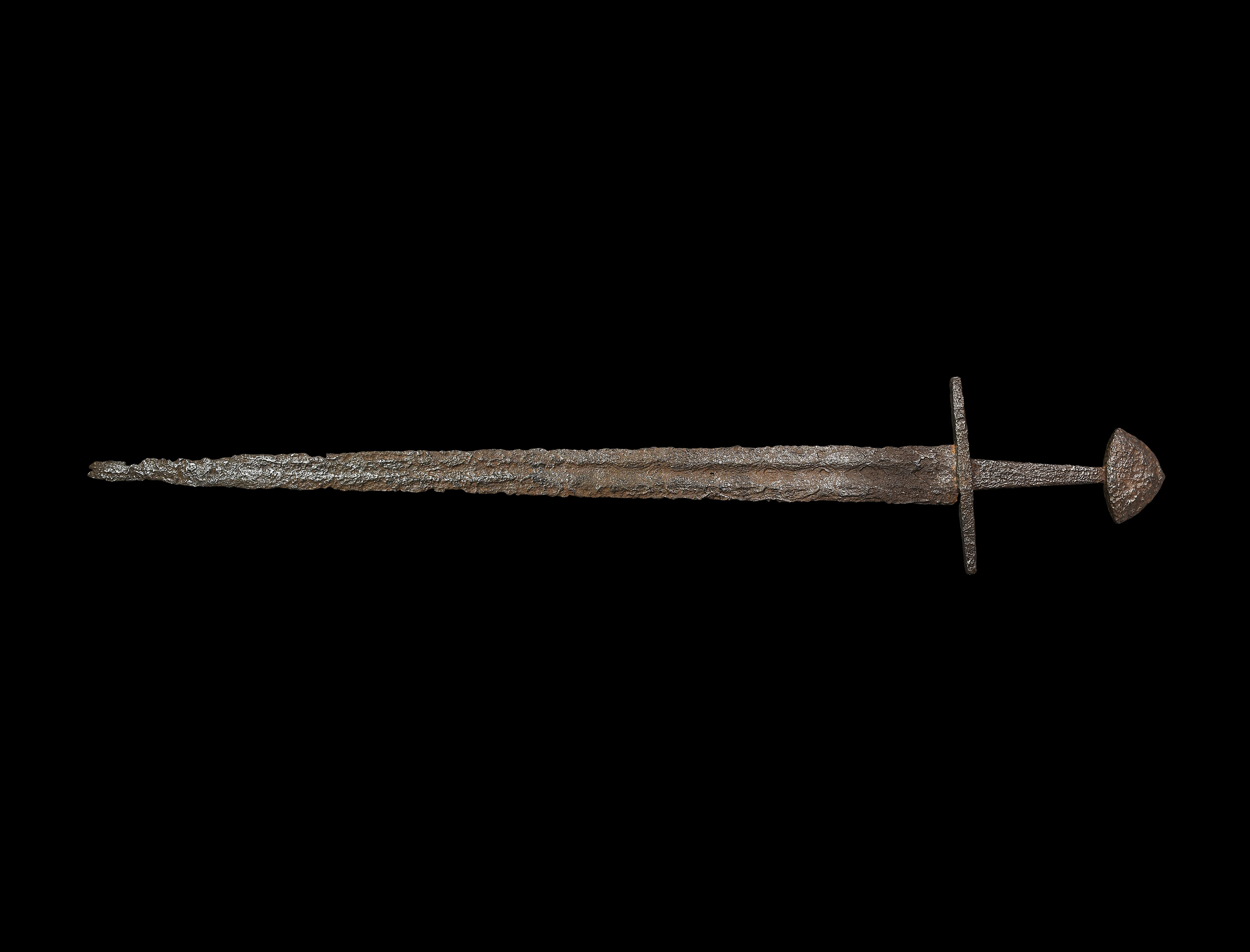
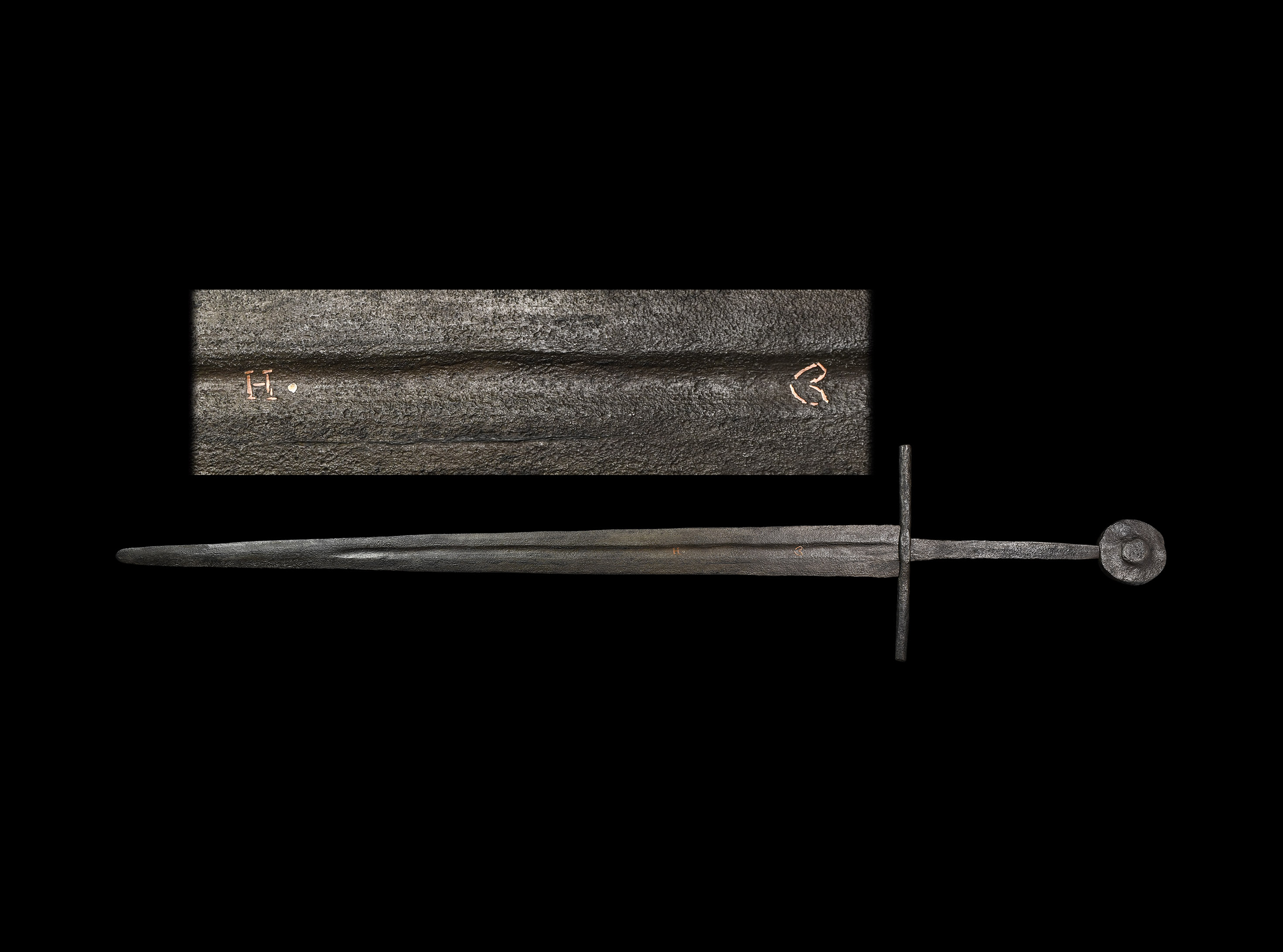
.jpg)
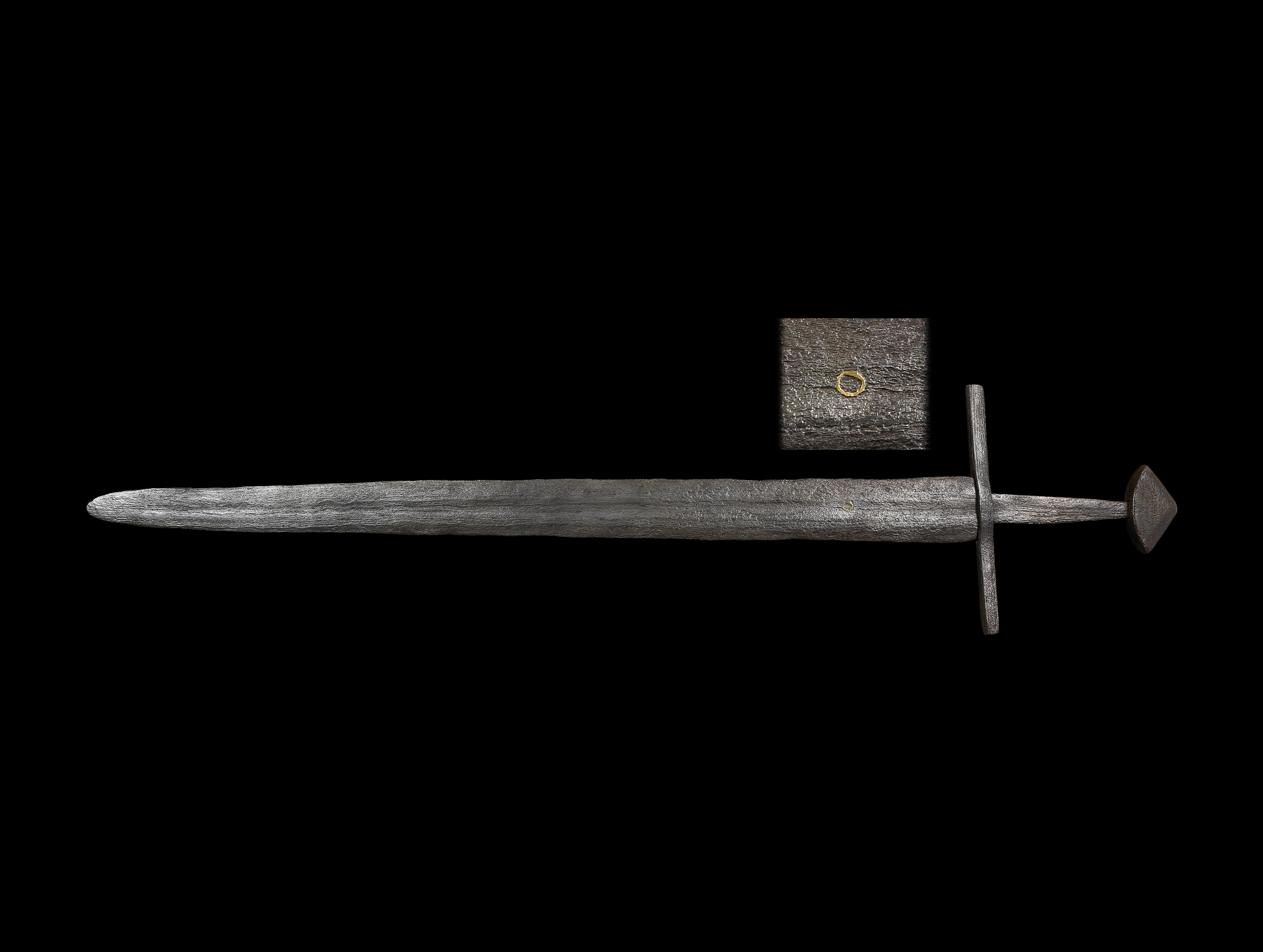
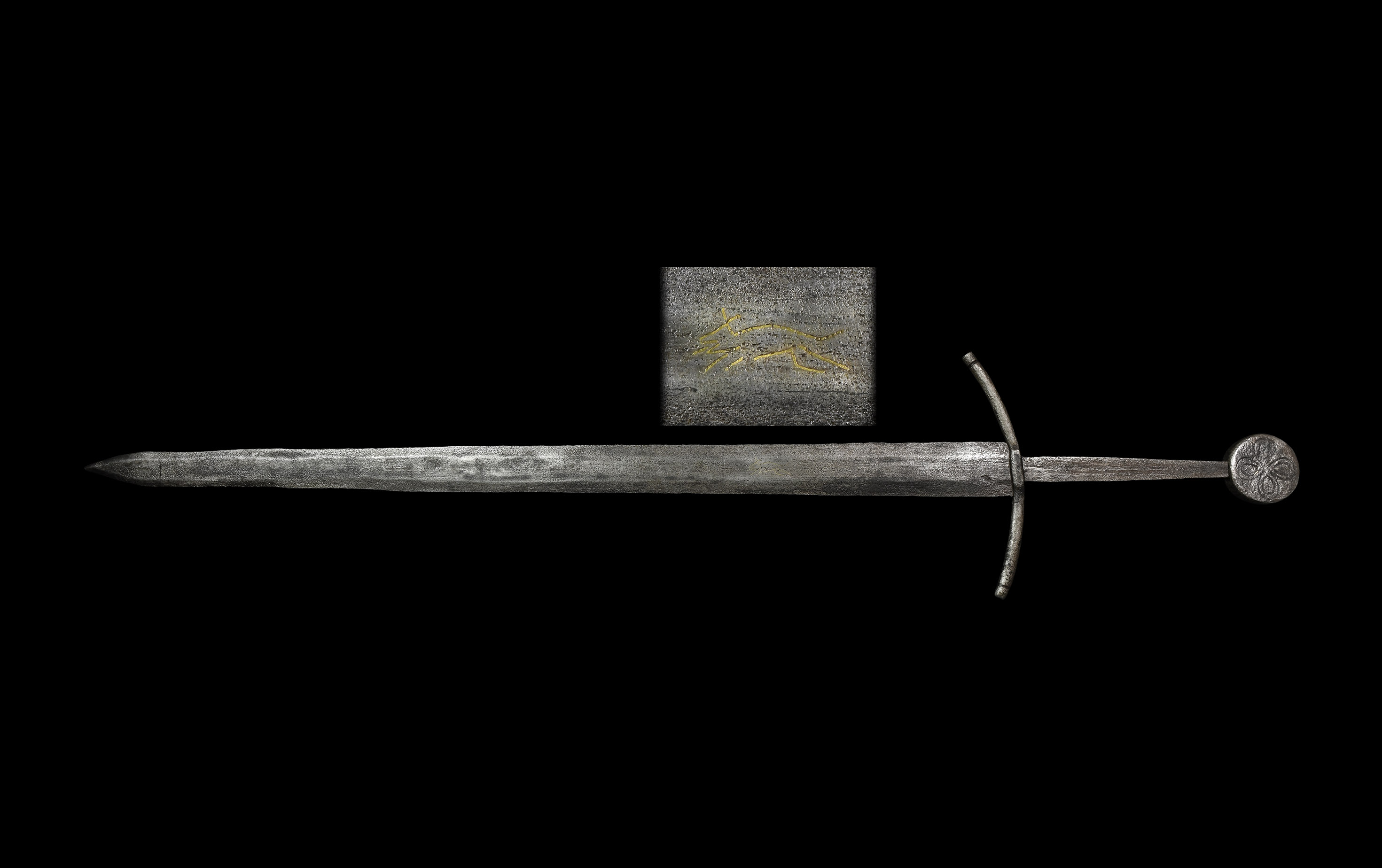
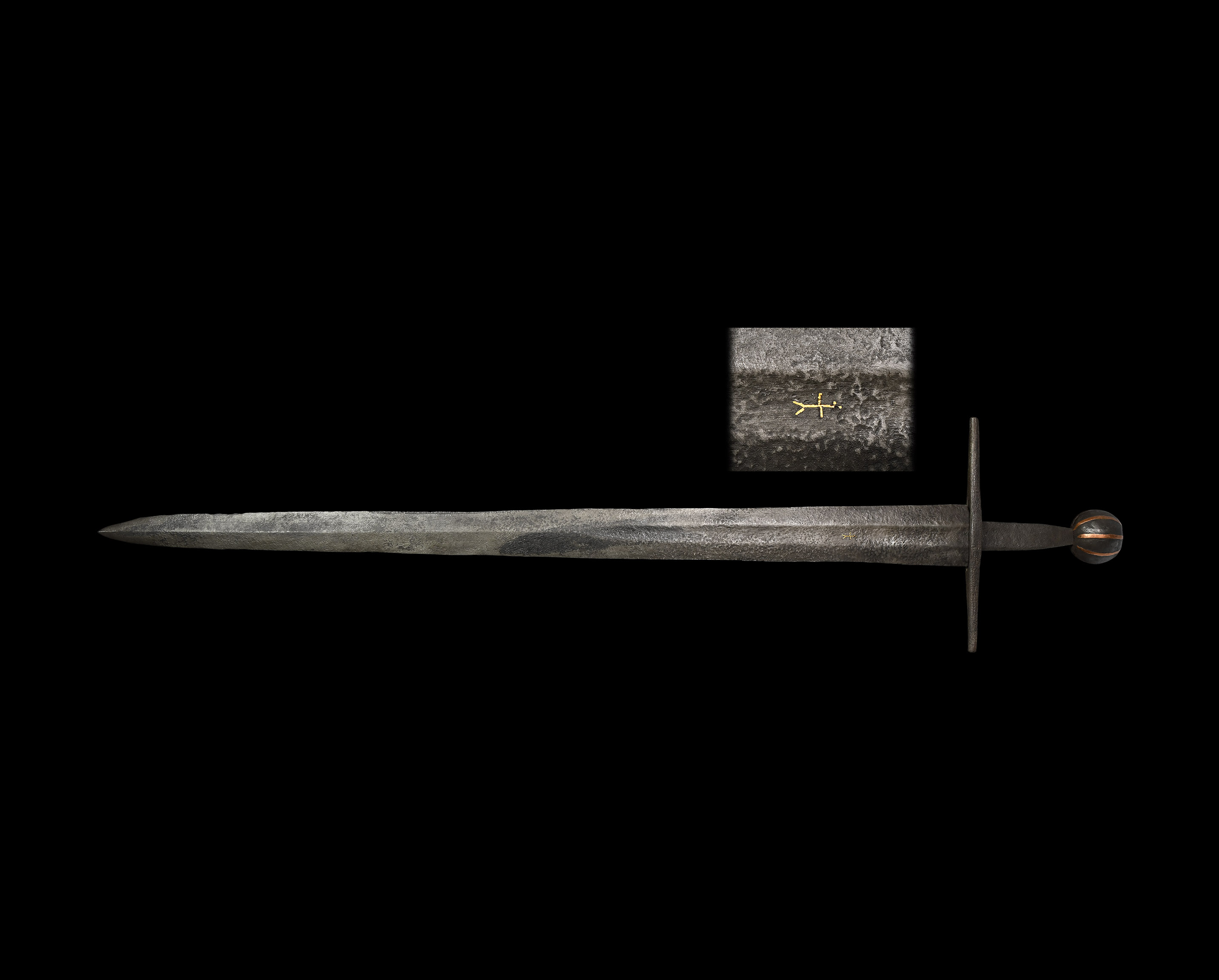
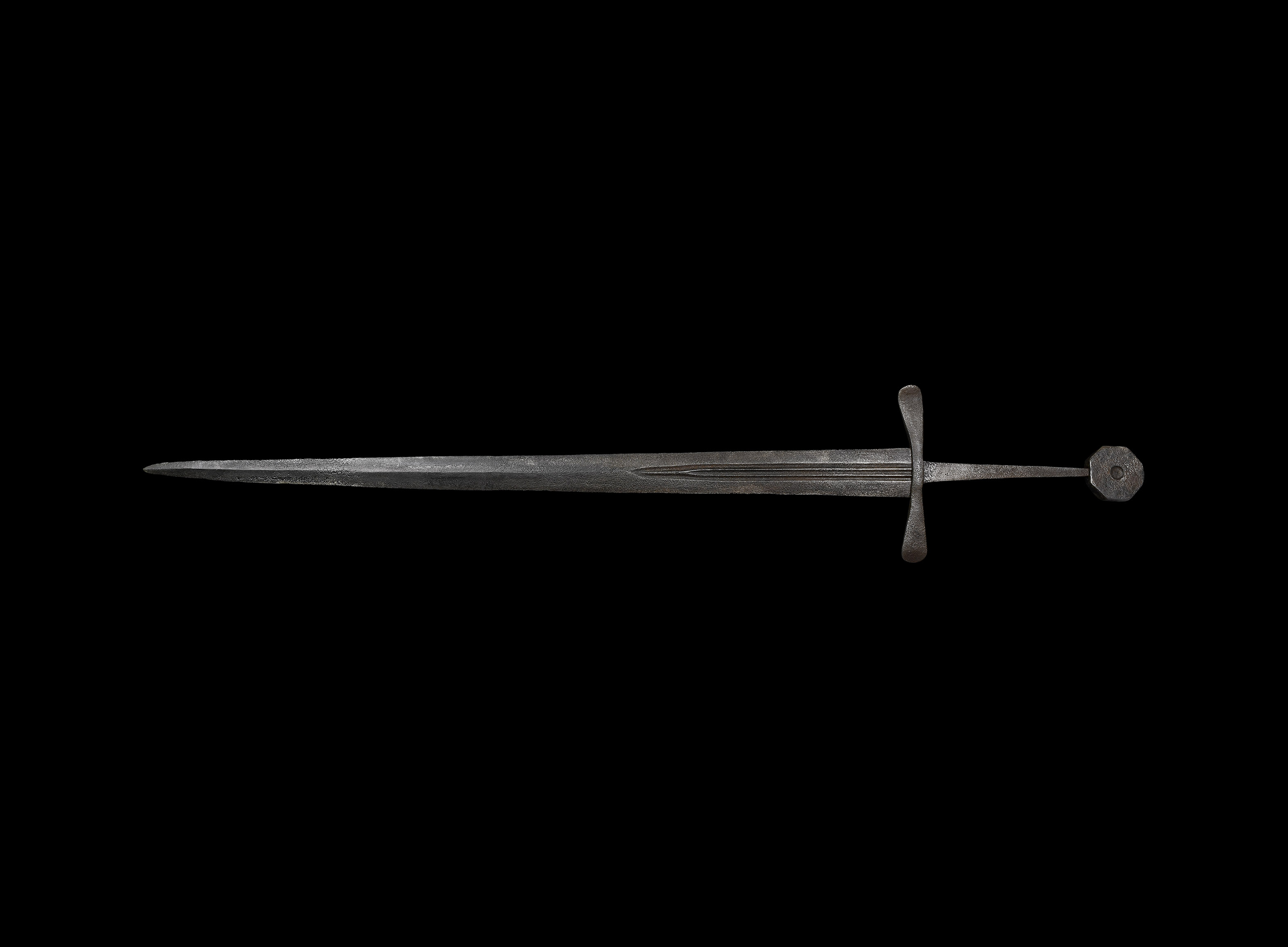
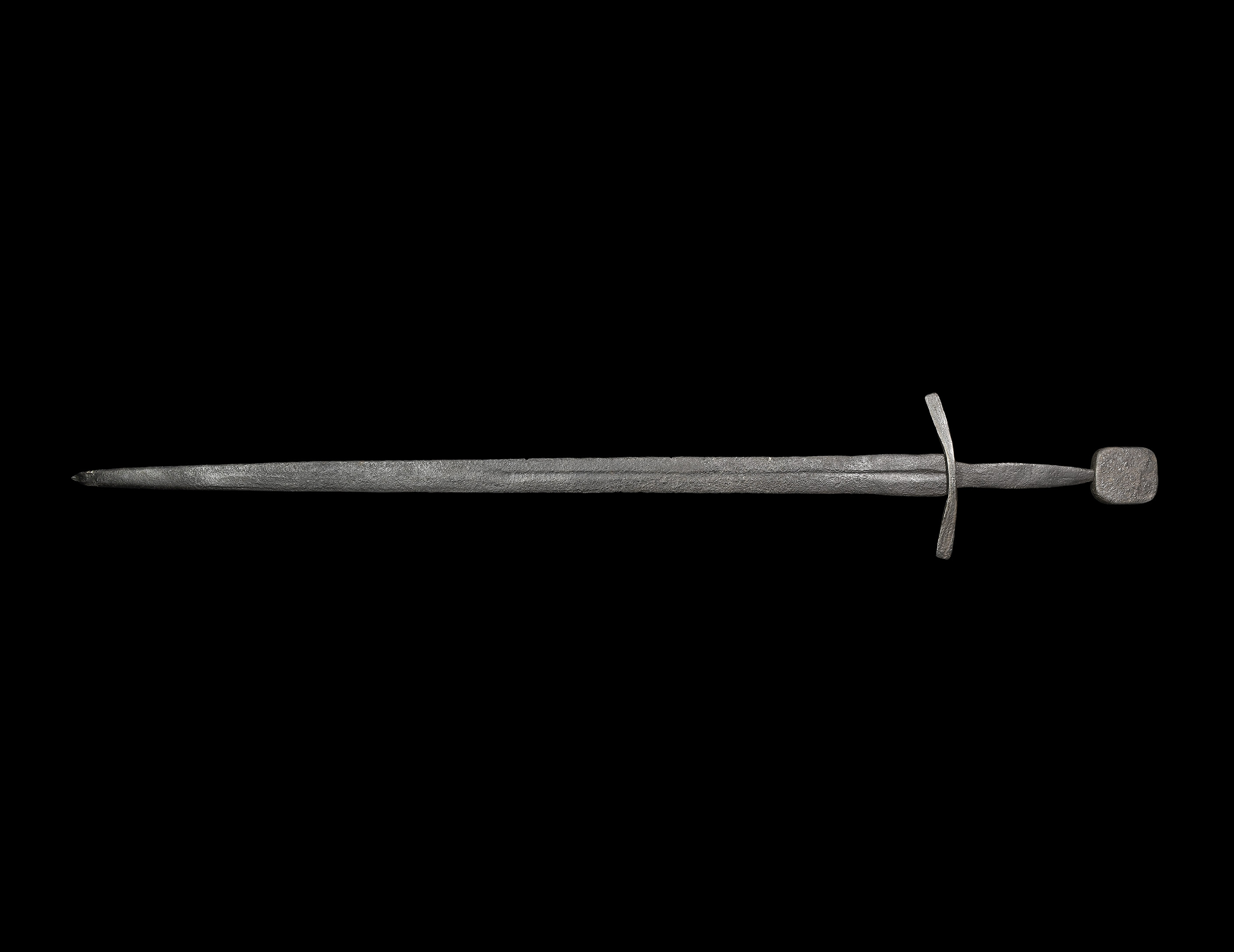
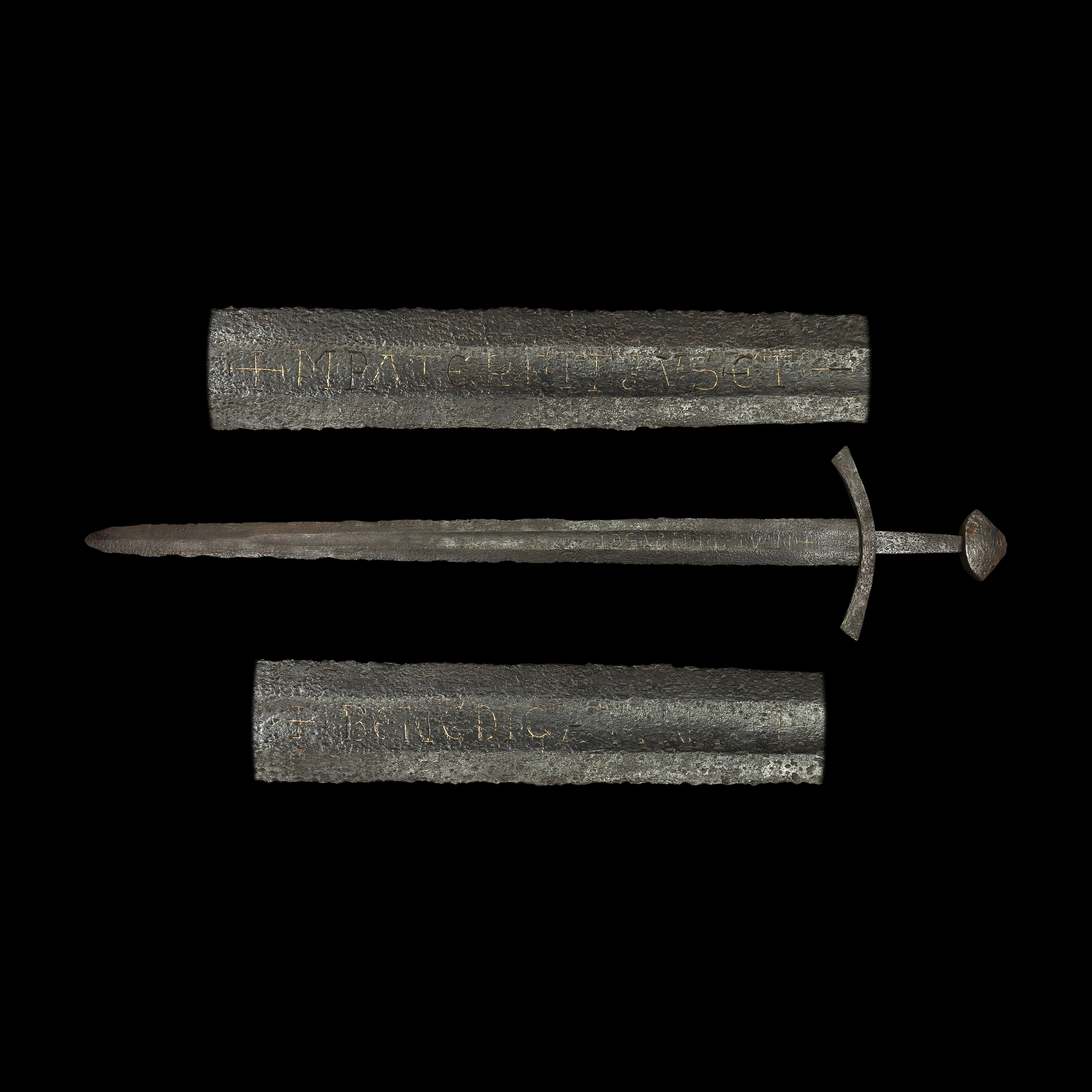
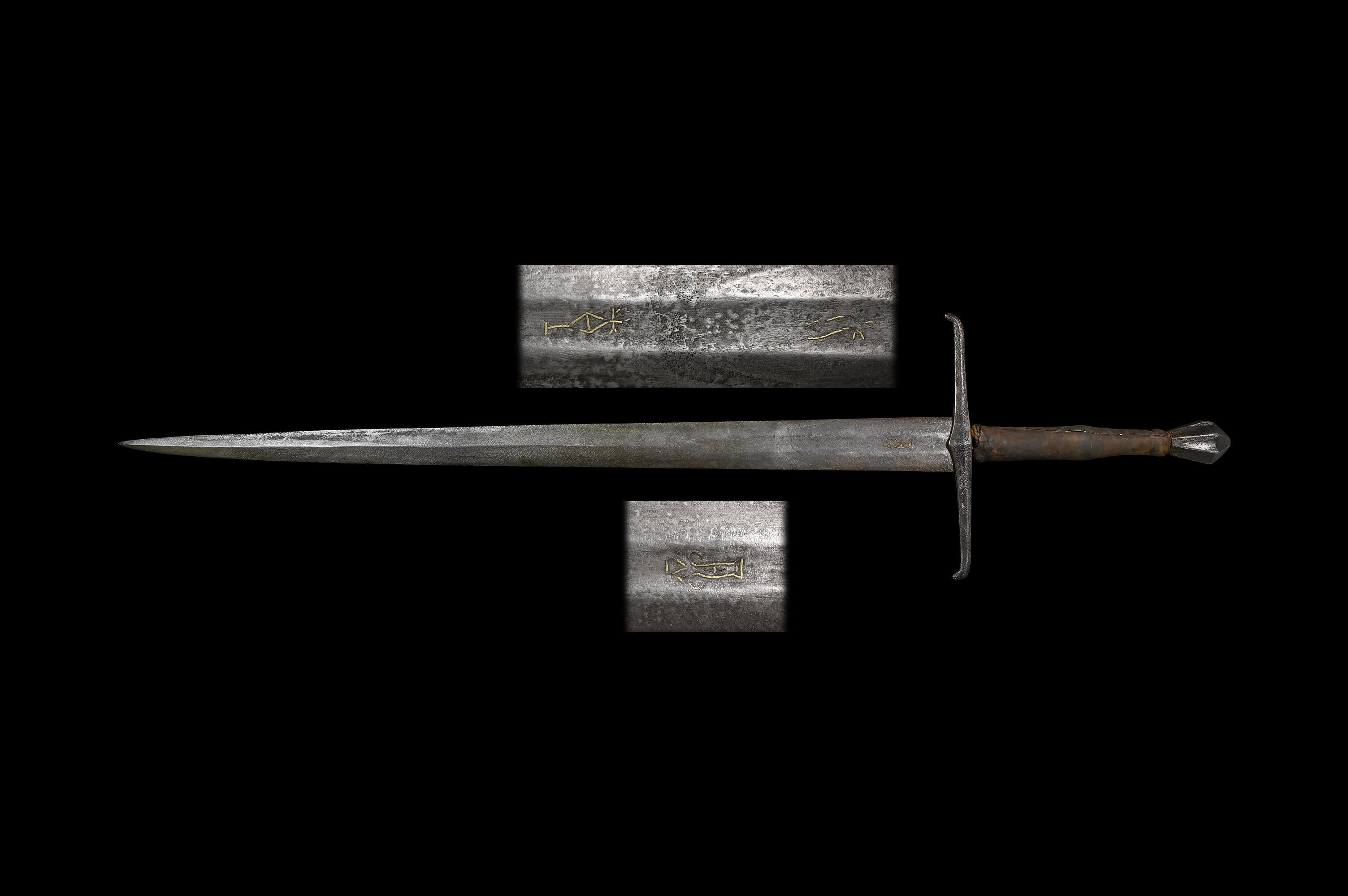

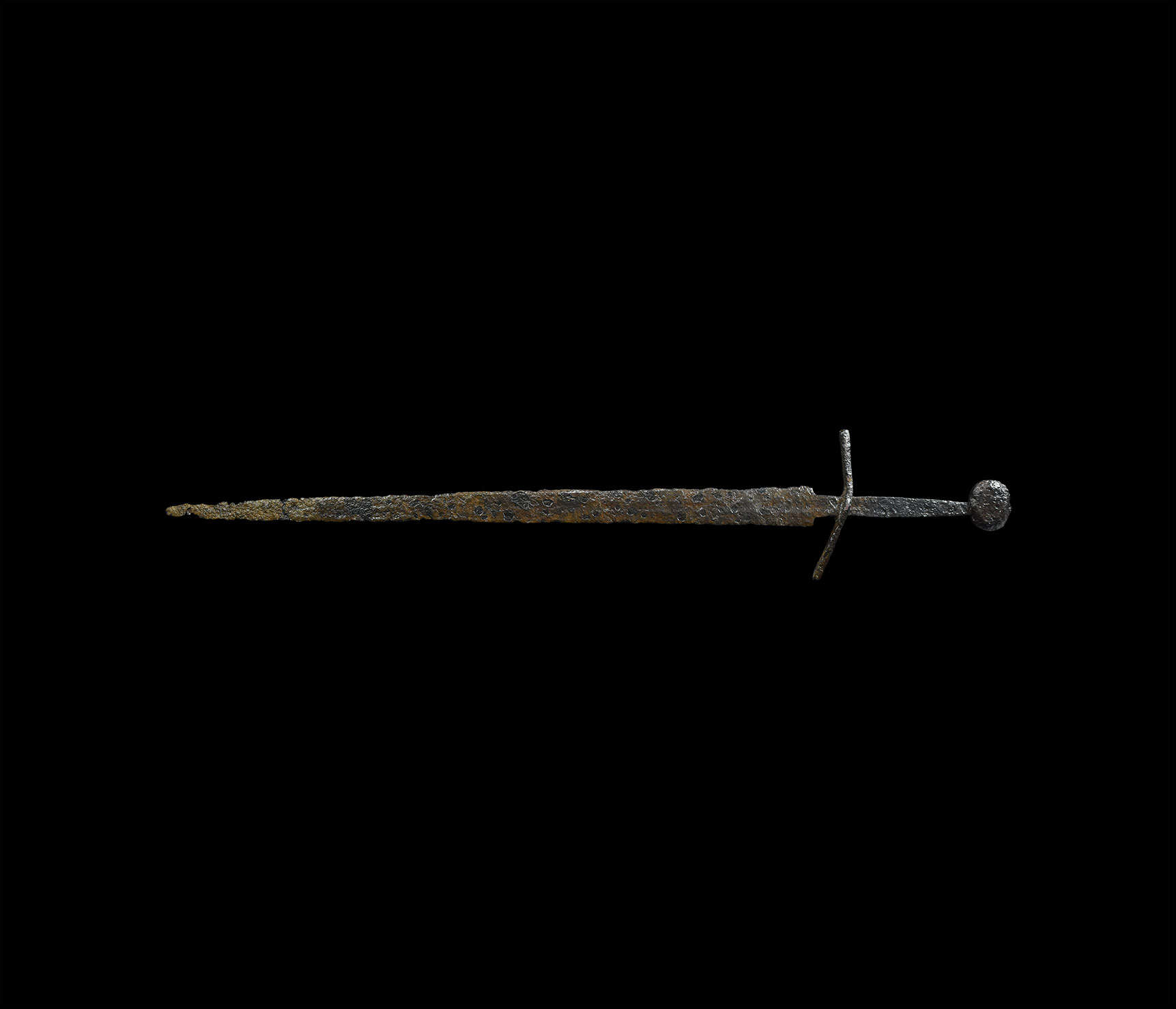
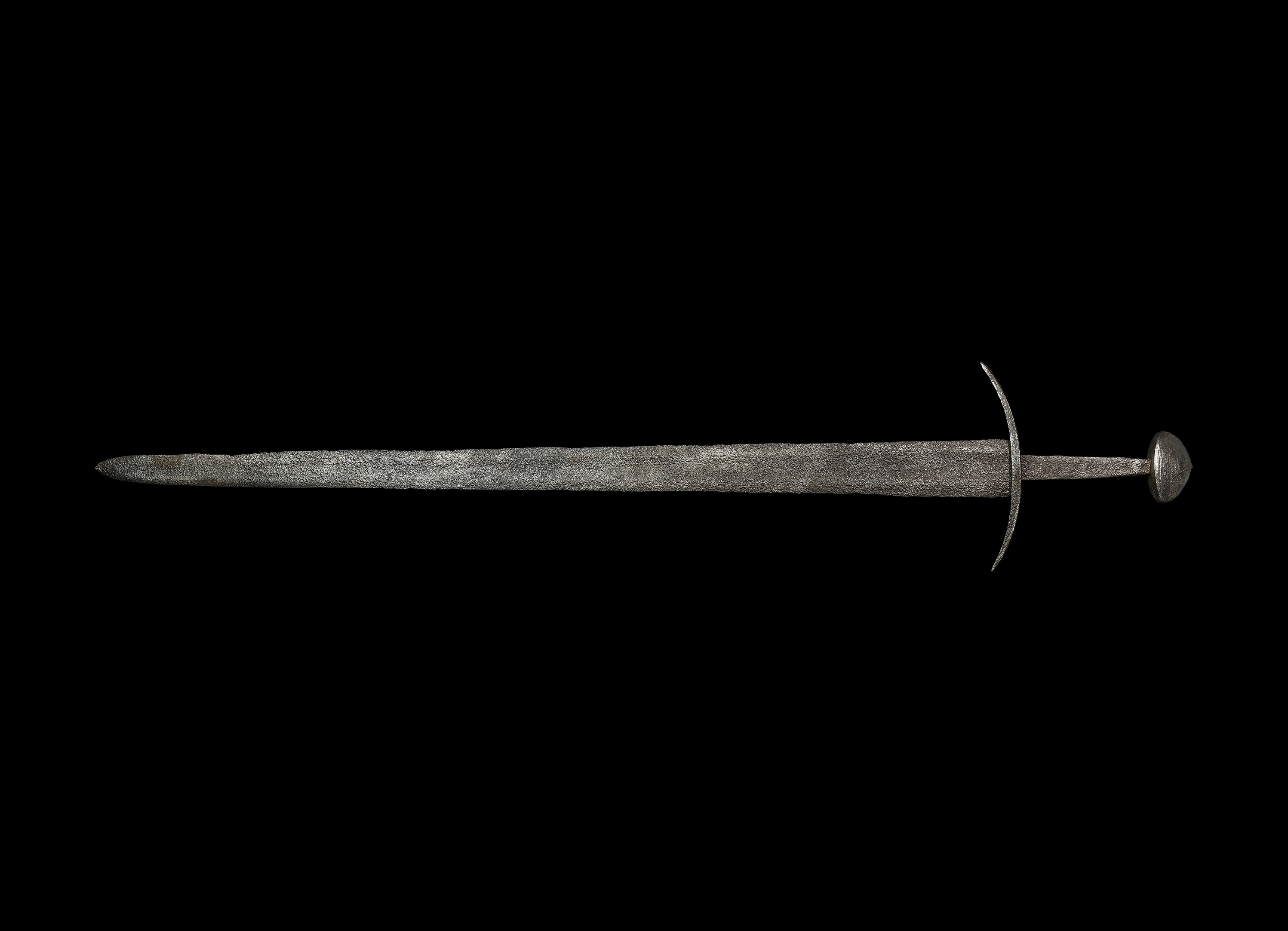
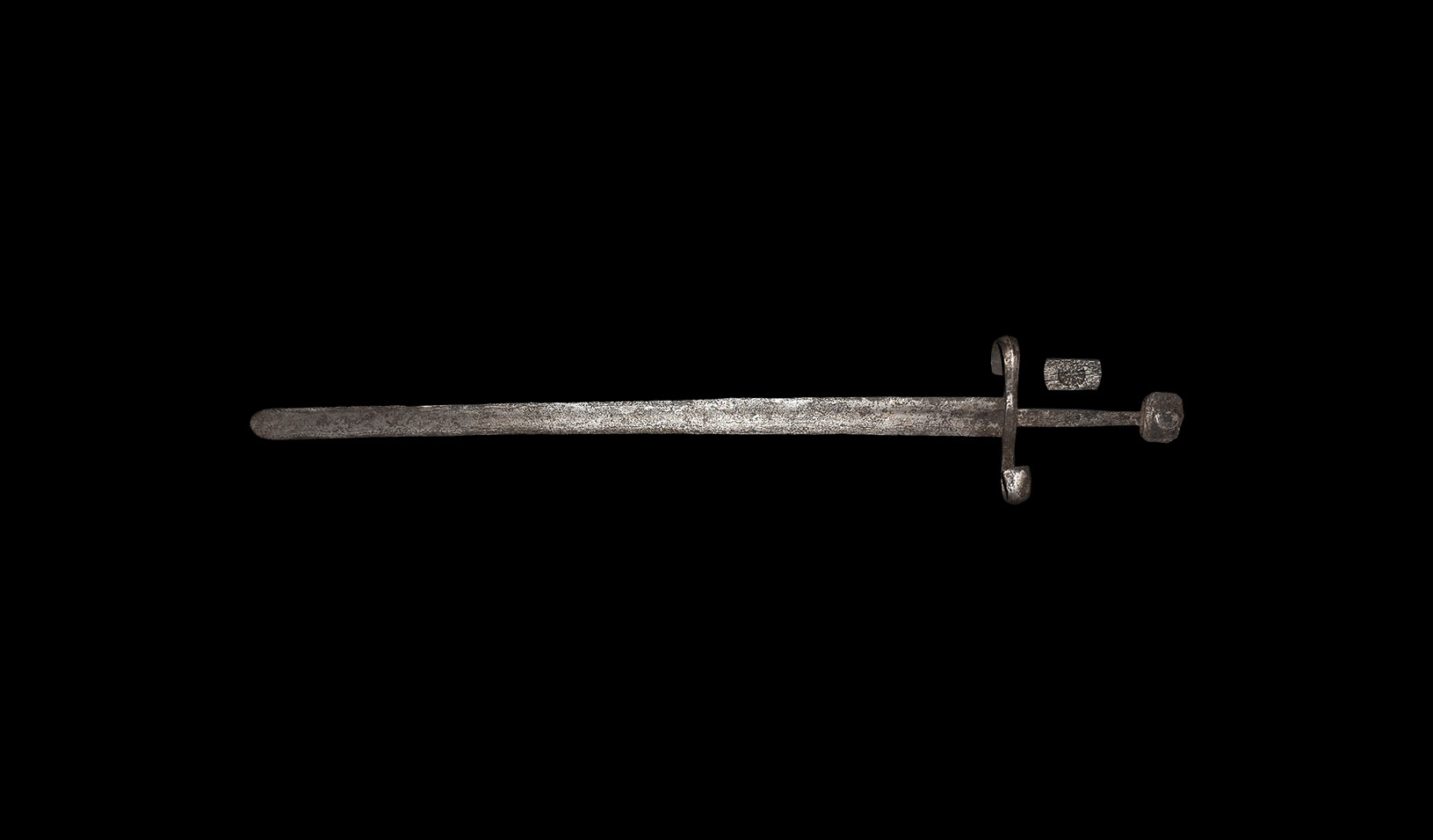

Try LotSearch and its premium features for 7 days - without any costs!
Be notified automatically about new items in upcoming auctions.
Create an alert